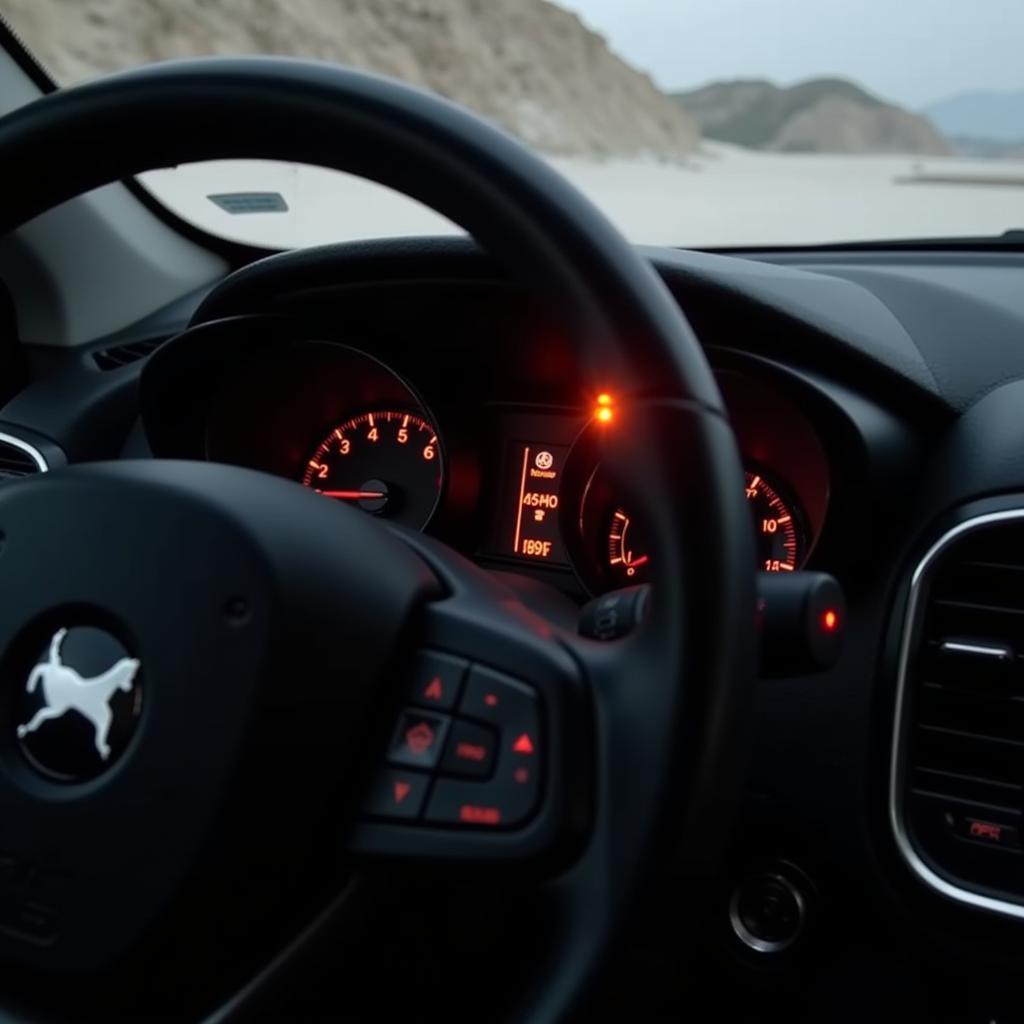The brake warning light on your 2008 GL450 can be a scary sight. It indicates a potential issue with your braking system that needs immediate attention. This guide will help you understand the common causes of this warning light, how to diagnose the problem, and what steps to take to get your brakes back in top shape.
Common Causes of a Brake Warning Light
The brake warning light on your 2008 GL450 can illuminate for several reasons. Here are some of the most common:
- Low Brake Fluid: This is the most frequent cause of a brake warning light. When your brake fluid level is low, it can indicate a leak in the system.
- Brake Pad Wear: Worn brake pads can trigger the warning light, as they can cause the brake system to operate inefficiently.
- Faulty Brake Sensors: The sensors that monitor brake pad wear, fluid level, and other aspects of the brake system can malfunction, resulting in a false alarm.
- Parking Brake Issues: A faulty parking brake can activate the warning light, especially if it’s not fully released.
- Electrical Malfunctions: Loose connections, damaged wiring, or faulty components in the brake system’s electrical circuitry can also cause the warning light to come on.
Diagnosing the Problem
The first step in fixing a brake warning light is to determine the root cause. Here’s how to do it:
-
Check Brake Fluid Level: Start by checking the brake fluid reservoir. The level should be within the “Full” markings on the reservoir. If it’s low, you need to investigate for a leak.
-
Inspect Brake Pads: Visually inspect the brake pads on all four wheels. If they are worn down to the wear indicator, it’s time for replacement.
-
Scan for Codes: Using an OBD-II scanner, you can check for any stored diagnostic trouble codes (DTCs). These codes can provide valuable insight into the specific issue within the brake system.
-
Test Parking Brake: Ensure that the parking brake is properly released. If it’s not fully disengaged, it might be causing the warning light.
-
Inspect for Leaks: Look for any signs of brake fluid leaks, such as wet spots under the vehicle, or around the brake lines and calipers.
Fixing the Brake Warning Light
Once you’ve diagnosed the cause of the warning light, you can take the appropriate steps to resolve it:
-
Replace Low Brake Fluid: If the fluid level is low, top it off with the correct type of brake fluid for your vehicle. Then, have a mechanic inspect the brake system for leaks.
-
Replace Brake Pads: If the brake pads are worn, replace them with new ones. It’s also a good idea to have the brake rotors inspected and resurfaced, or replaced if necessary.
-
Repair Faulty Sensors: If a sensor is malfunctioning, you’ll need to replace it.
-
Address Parking Brake Issues: If the parking brake is faulty, have it repaired or replaced.
-
Resolve Electrical Problems: If an electrical malfunction is responsible for the warning light, you’ll need to identify and repair any damaged wiring, loose connections, or faulty components.
Expert Advice:
“It’s essential to address a brake warning light promptly,” says John Smith, a certified automotive technician with over 20 years of experience. “Ignoring the light could lead to a catastrophic brake failure, potentially resulting in serious accidents.”
“It’s important to use the correct brake fluid type for your vehicle,” adds Mary Jones, a seasoned automotive service manager. “Using the wrong fluid can damage the brake system and compromise its effectiveness.”
FAQ
Q: What should I do if I see my brake warning light come on while driving?
A: If your brake warning light comes on while driving, it’s essential to pull over safely as soon as possible. Avoid hard braking or sudden maneuvers and have your vehicle inspected by a qualified mechanic.
Q: How often should I have my brakes inspected?
A: It’s recommended to have your brakes inspected every 6 months or 5,000 miles, whichever comes first.
Q: Can I replace the brake pads myself?
A: While it’s possible to replace brake pads yourself, it’s a complex task that requires specialized tools and knowledge. If you’re not comfortable working on your own vehicle, it’s best to take it to a professional mechanic.
Q: What are the signs of worn brake pads?
A: Signs of worn brake pads include a high-pitched squealing or grinding noise when braking, a soft pedal, or a spongy feel to the brake pedal.
Q: Can I drive my car if the brake warning light is on?
A: While you might be able to drive your car with the brake warning light on, it’s not advisable. It indicates a potential problem with your braking system that needs immediate attention. Avoid driving your vehicle until it’s been inspected and repaired by a qualified mechanic.

